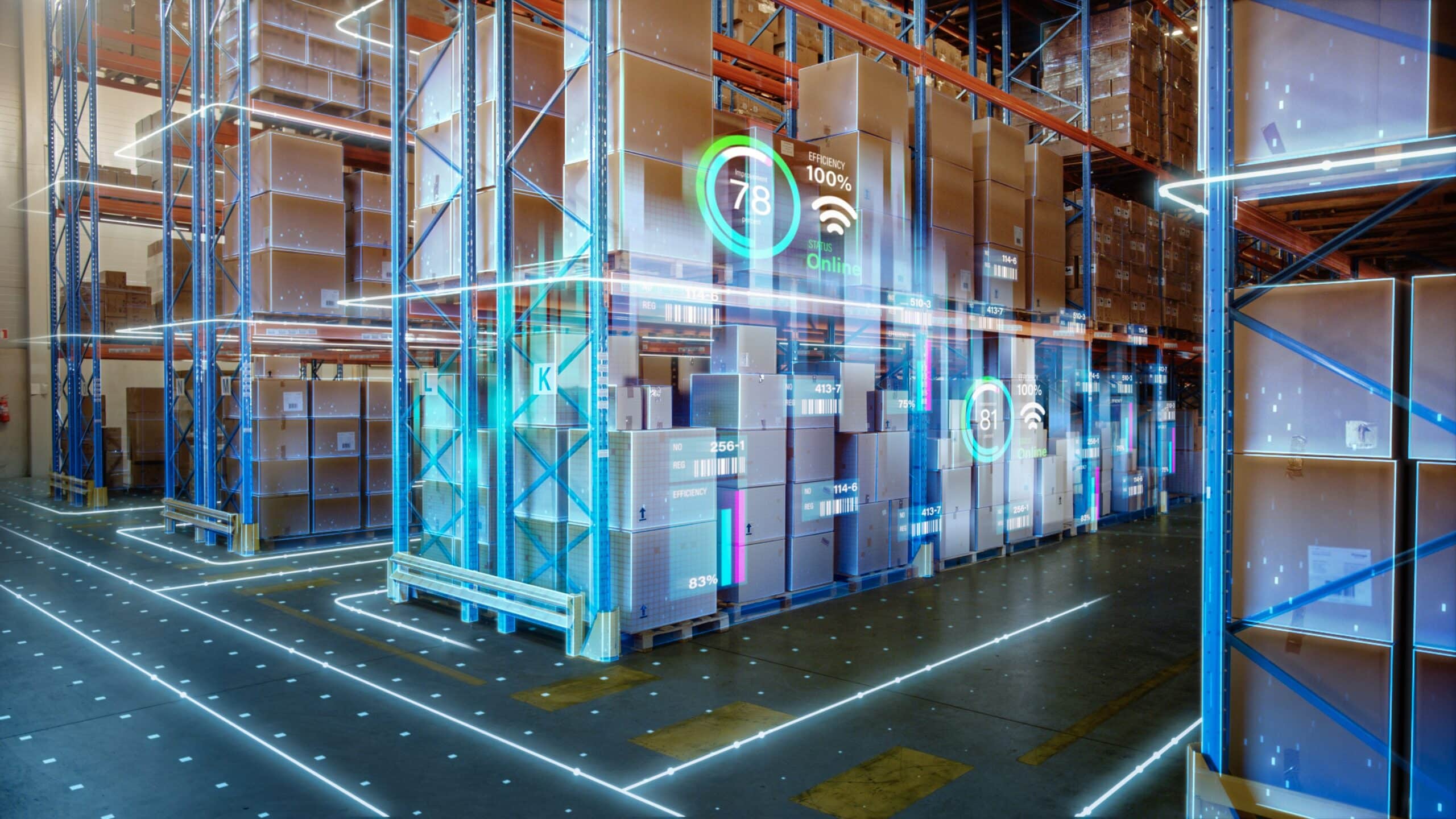From processing massive amounts of data to predicting when equipment will break down, artificial intelligence (AI) is transforming the supply chain. One powerful application is AI demand forecasting: this technology is giving supply chain organizations the power to predict what products customers will want, when, and where they’ll want them. This knowledge and visibility can mean the difference between profit and loss and growth and stagnation.
With all the buzz about AI demand forecasting, how can you know which promises are real and which are just hot air? With vendors touting abilities like near-perfect accuracy and tools that can learn and adapt “automatically,” it’s easy to get swept up in the excitement. But as with any emerging technology, there’s a fine line between breakthrough innovation and inflated claims.
This article will dive deep into what AI demand forecasting can truly deliver today, which claims are likely just hype, and how you can choose demand forecasting tools that will meet your expectations.
What is AI Demand Forecasting?
AI demand forecasting is the use of artificial intelligence and machine learning algorithms to predict future customer demand for products. Unlike classic approaches that rely on historical sales data and simple models, AI can process vast amounts of data from different sources, identify complex patterns, flag outliers, and adapt over time as new information becomes available.
What makes AI different? It can recognize non-obvious patterns, “learn” from itself, and has the ability to incorporate a wide range of outputs, including:
- Historical sales and seasonal trends.
- External data like weather, holidays, social media trends, and market signals.
- Real-time data from point-of-sale systems or eCommerce platforms.
The result? Greater accuracy, more agility, and improved inventory management. Research shows AI can reduce errors in forecasting by 50%, warehouse costs by 10%, and administrative costs by 40%. While these promises are compelling, it’s important to understand the real capabilities – and limits – of these tools before expecting them to transform your forecasting.
What AI Demand Forecasting Can Do
AI demand forecasting tools are not a magic wand, but they do offer practical and powerful capabilities that surpass traditional methods.
Here’s what AI demand forecasting can realistically do for inventory-based businesses:
1. Improve forecast accuracy
AI models excel at uncovering complex patterns in large datasets. For example, they can potentially detect subtle relationships between weather patterns and product sales or how promotions impact demand across regions. Meanwhile, with AI-based demand sensing and forecasting, you can take leading indicators and third-party data sets (such as macro indicators, POS data, and customer sentiment data) to more accurately sense and forecast demand.
2. Flag unusual sales
Sometimes, unusual sales or outlier events can skew a forecast. AI can identify these sales for further investigation and offer the option to exclude the irrelevant outliers altogether. These tools also allow planning & procurement teams to flag unusual activity for discussion with sales or executive teams.
3. Automate time-consuming processes
AI can streamline previously time-consuming tasks like data cleansing, order generation, outlier detecting, and forecast creation. This automation frees up planners to focus on strategy and sophisticated planning rather than tasks like spreadsheet maintenance.
4. Due-to-buy visibility
This AI-powered feature allows you to monitor trends in customer purchasing behavior and flag large orders that are delayed or overdue. Then, you can act proactively to handle the situation instead of simply losing the account.
5. Price elasticity modeling
Price elasticity modeling shows the impact of various pricing scenarios (for example, because of tariffs, markdowns, etc.). This allows you to see how your demand will react to increases or decreases in price based on your industry and product category
What’s Just Hype?
While AI demand forecasting holds real promise, it’s important also to be aware of its limitations. Some of the boldest marketing pitches and taglines sound too good to be true, and that’s because they sometimes are.
Here’s what to approach with healthy skepticism when it comes to AI demand planning:
1. “Set it and forget it” automation
A common myth about AI forecasting is that it can run entirely on autopilot with no human intervention. While the idea of a machine doing your entire job for you might sound nice, the reality is that AI requires oversight. For example, you need to feed it clean, structured data, validate its outputs, and make judgment calls when anomalies arise.
2. 100% accuracy claims
By nature, forecasting comes with a degree of uncertainty. No model (AI or otherwise) can predict the future with 100% precision. If vendors are offering total or near-total accuracy, they’re overpromising. Even the best AI systems offer fewer errors and can’t eliminate them completely.
3. Instant results (with no data prep)
AI requires large, high-quality datasets to thrive. If your organization struggles with siloed data, lacks robust historical data, or doesn’t have enough real-time visibility, your AI tools might struggle to predict demand accurately.
4. Every AI tool is equally advanced
The label “AI-powered” is often liberally applied to products because it can invite ideas of advanced abilities. However, not all AI tools are created equal, and it’s important to discern what’s really going on beneath the surface. For example, some tools might use basic regression models and call it AI, while others incorporate advanced machine learning technology. Don’t assume that every “AI” solution on the market offers the same level of sophistication or real-world value.
What to Look for in AI Demand Forecasting Tools
With so many vendors offering “AI-powered” forecasting solutions, how can you separate meaningful functionality from spin?
Here’s how you can evaluate AI demand planning tools:
- Transparency into findings: Instead of just taking forecasts at face value, look for AI tools that provide insights into how those forecasts are generated. Your software should be able to show you why the model made a particular prediction and show the underlying data used.
- Seamless integration into existing systems: Your forecasting tool should also easily integrate with existing systems (such as your ERP and WMS). The real value comes from end-to-end visibility, not from siloed, standalone predictions.
- Customizability: Look for tools that let your team select parameters, apply controls and rules, or override when necessary. The best platforms offer a balance of automation and human control – empowering your planners, not replacing them.
- User-friendly interfaces: Your AI partner shouldn’t make your operations more complicated. Look for user-friendly tools that offer features like intuitive dashboards and simple reporting so you can quickly understand your data (and act on it)
In a crowded market, these criteria will help you identify tools that offer genuine value and help you accomplish your goals instead of just empty promises.
Unlock the Power of AI Demand Forecasting with StockIQ
AI is a game-changer for demand forecasting, and the right tool has the power to enhance your team’s capabilities, improve forecast accuracy, and boost transparency. If you’re ready to tap into AI’s demand planning capabilities, we should talk.
We’re StockIQ, a supply chain planning suite built for businesses like yours that uses advanced technologies to help you streamline your replenishment planning process, including your software and strategies. Our user-friendly system enables you to control inventory, simplify ordering, and enhance forecasting with AI-powered tools and sophisticated machine-learning algorithms.
Are you interested in learning how StockIQ can help you (realistically) leverage the potential of artificial intelligence? Contact us today or request a StockIQ demo.

